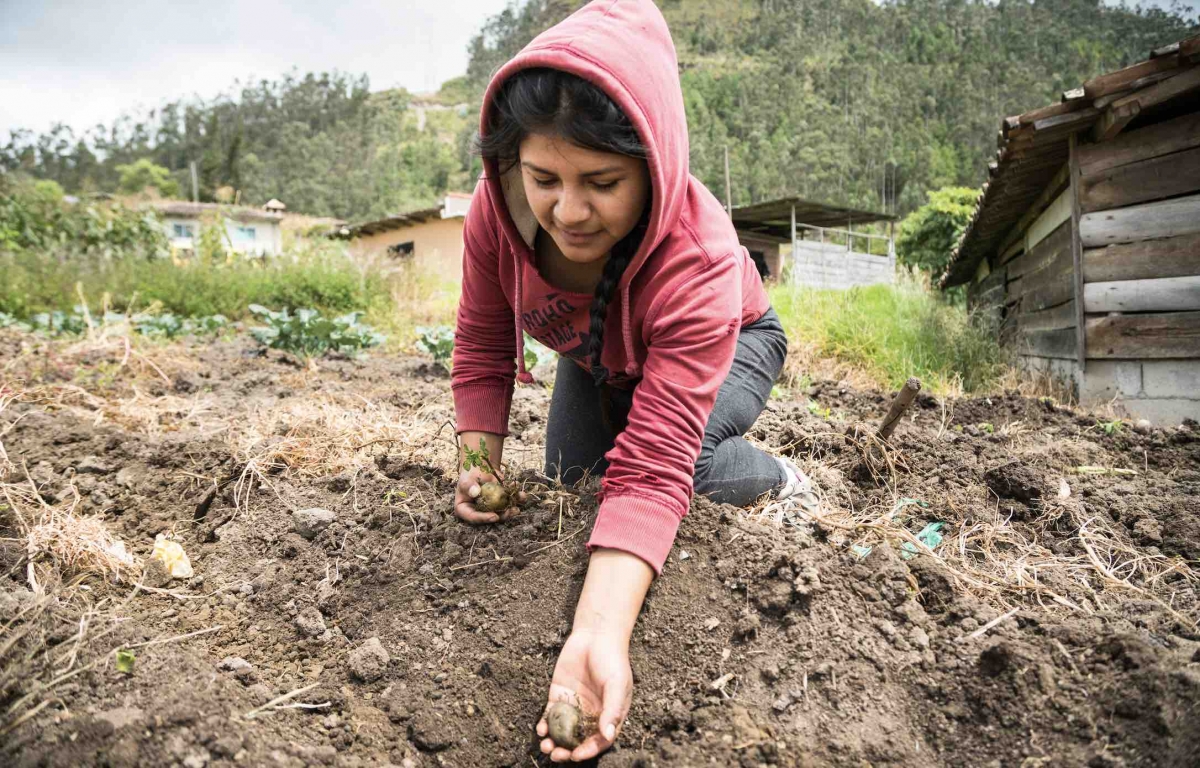Advancing adaptation and gender equality in Ecuador

Last week, a major scientific report by the IPCC highlighted that nearly half of the global population is highly vulnerable to the impacts of climate change. It also notes that vulnerability of people to climate change can be exacerbated by socio-economic factors, marginalization, and inequity – linked to gender, ethnicity, income or combinations of these. On International Women’s Day, Estefania Aguayo of UNDP Ecuador tackles a few key questions and explains why gender equality is an integral part of climate change adaptation planning. UNDP and the Green Climate Fund are supporting Ecuador’s adaptation planning process.
Why is integrating gender in climate change adaptation crucial for achieving sustainable development?
Climate change affects women and men differently by virtue of existing gender inequalities in societies. In Ecuador, it is estimated that 6 out of 10 women experience gender-based violence. Women’s unemployment rate is higher than men, and women are less represented at the decision-making level. These and other factors make women as well as minorities, children and adolescents more vulnerable because they have less resources to cope with the adverse effects of climate change. The pandemic has shown us, we are as strong as our weakest link. That is why we embrace the national adaptation planning process as an opportunity to take account of different vulnerabilities of the population and address inequalities to achieve sustainable development.
What steps are being taken to mainstream gender in adaptation planning?
 Gender mainstreaming requires commitment and political will. It is a complex and demanding process that requires overcoming barriers and changing dominant paradigms. This means it is extremely important to devote adequate human and financial resources.
Gender mainstreaming requires commitment and political will. It is a complex and demanding process that requires overcoming barriers and changing dominant paradigms. This means it is extremely important to devote adequate human and financial resources.
In Ecuador, we are planning a gender analysis to identify the differentiated vulnerabilities and adaptation measures. Ensuring equal participation as well as improving the availability of sex disaggregated data are other important areas of work which are necessary for planning, implementation as well as monitoring and evaluation.
The leadership of the Ministry of Environment, Water and Ecological Transition has been crucial in making progress. We have developed technical support tools and workstreams to ensure integration of gender which will remain relevant beyond the lifetime of our project (an example here). Currently, the country is developing a Gender and Climate Change Action Plan.
How can results be sustained?
It is essential to follow-up until results are achieved.
Day by day, we concentrate our efforts on sensitizing, raising awareness, and training key stakeholders, partners, our internal team, the general population so that ultimately no one  questions why gender equality is important in our response to climate change. We learn from our peers around the world who are supporting countries with gender responsive adaptation planning and we share our experiences, disseminating tools, guides, and lessons for possible replication (see for example, the Wiki on climate change adaptation and gender; and the Database of good practices and lessons learned in Spanish).
questions why gender equality is important in our response to climate change. We learn from our peers around the world who are supporting countries with gender responsive adaptation planning and we share our experiences, disseminating tools, guides, and lessons for possible replication (see for example, the Wiki on climate change adaptation and gender; and the Database of good practices and lessons learned in Spanish).
The factors that reinforce gender inequality are deeply ingrained in our societies and cultures, therefore, we must all play an active role to advance gender equality for a sustainable tomorrow.
Estefania Aguayo is the Gender specialist in UNDP’s National Adaptation Plan project in Ecuador (PLANACC), funded by the Green Climate Fund Readiness Programme.